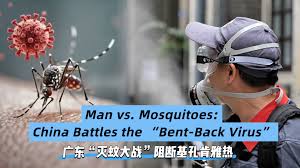China is facing a serious outbreak of Chikungunya virus, with over 7,000 cases already reported across several provinces.
In a bold and unusual move, health officials have turned to nature to fight nature—by releasing giant “elephant mosquitoes” to help control the spread of the disease.
Chikungunya is a viral disease transmitted to humans by infected Aedes mosquitoes, the same type that spreads dengue and Zika.
It causes fever, severe joint pain, rashes, and fatigue. Though rarely fatal, it can leave lasting effects on a person’s health.
To tackle the outbreak, Chinese scientists and public health teams are deploying Toxorhynchites mosquitoes, also known as elephant mosquitoes. These large mosquitoes are non-biting and do not feed on human blood.
Instead, their larvae are natural predators of the smaller, virus-spreading Aedes mosquitoes.
Officials believe this eco-friendly method could reduce the mosquito population without the need for excessive pesticide use.
“The elephant mosquito is harmless to people and has the ability to consume large numbers of mosquito larvae before reaching adulthood,” said an entomologist with China’s Disease Control Agency.
How It Works
Elephant mosquitoes are released in high-risk areas.
Their larvae feed on Aedes larvae in stagnant water sources.
Fewer Aedes mosquitoes grow to adulthood, reducing the chances of virus transmission.
This biological approach is part of China’s broader integrated mosquito management program, which also includes public education campaigns, elimination of stagnant water sources, and traditional spraying methods.
The sudden rise in Chikungunya cases has raised alarms among local communities and international health organizations. Experts warn that climate change and urbanization are contributing to the rise in mosquito-borne diseases by expanding mosquito habitats.
China’s Centers for Disease Control has urged citizens to, Use mosquito repellents, Install window screens, and Empty standing water in homes and neighborhoods.
As mosquito-borne diseases spread across the globe—from Asia to Africa and South America—China’s innovative approach could offer valuable lessons for other countries facing similar health threats.
“This strategy has been tested in small trials before, but deploying it at this scale shows China’s commitment to finding safer, sustainable disease control methods,” said a WHO advisor.
China’s health authorities are hopeful that the “mosquito versus mosquito” method will help bring the outbreak under control while setting a new standard in vector-borne disease management.



